People
‘This Part of the World Is Now in the Spotlight’: Katerina Gregos on Curating the Inaugural Riga Biennial Under Putin’s Shadow
The debut edition of the Riga International Biennial of Contemporary Art (RIBOCA) opens on June 2.
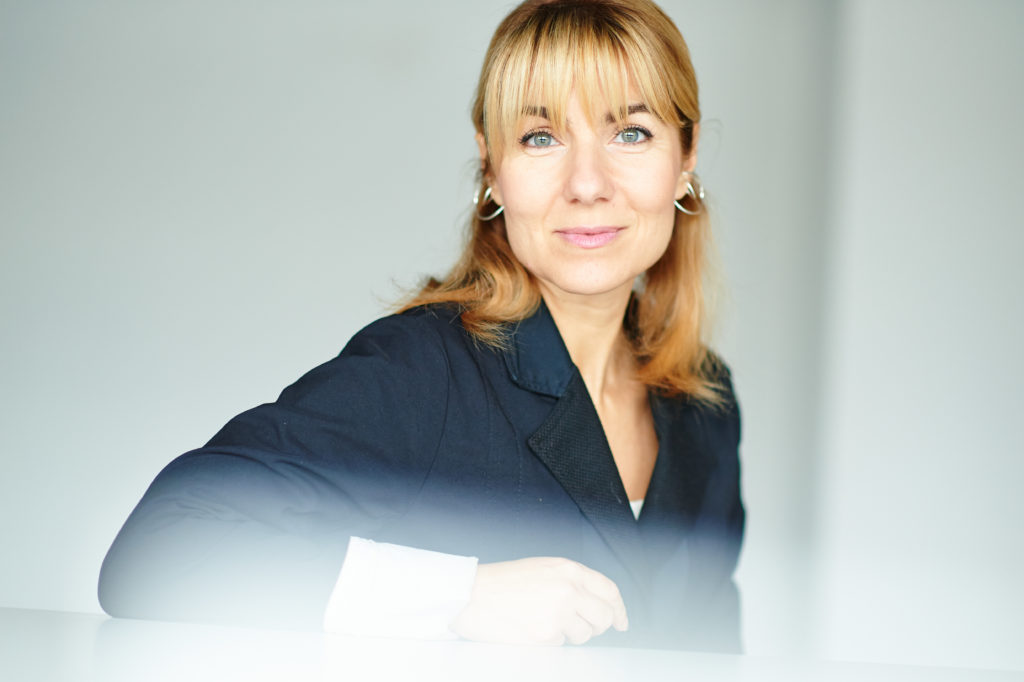
The debut edition of the Riga International Biennial of Contemporary Art (RIBOCA) opens on June 2.

Kate Brown

There is a new biennial on the scene this year, and it’s in Riga, Latvia. The privately funded event was launched by Agniya Mirgorodskaya, who previously worked in the Christie’s Russian art department and whose father is the biennial’s chief financial backer.
That might have raised a few eyebrows, but Mirgorodskaya, a half-Russian, half-Lithuanian graduate of the Sotheby’s Institute of Art, shrewdly struck up a collaboration with the seasoned curator Katerina Gregos, who is not known for shying away from difficult subjects in her biennials.
The exhibition officially opens on June 2 in Riga and, in true post-Soviet style, the venues convey a sense of foreboding grandeur, ranging from a former biology center to a regal private apartment to a Soviet-era railway station in the shape of a concrete wave. Baltic-region artists make up one third of the list of 104 artists (which includes 10 collectives) in the biennial. The strong regional profile is juxtaposed with such established international artists as Mark Dion, Michael Landy, Trevor Paglen, and Lynn Hershman Leeson.
With so many art fairs and biennials cropping up these days, one might reasonably ask, “why another?” Gregos gave artnet News her answer, plus much more in the conversation that follows.
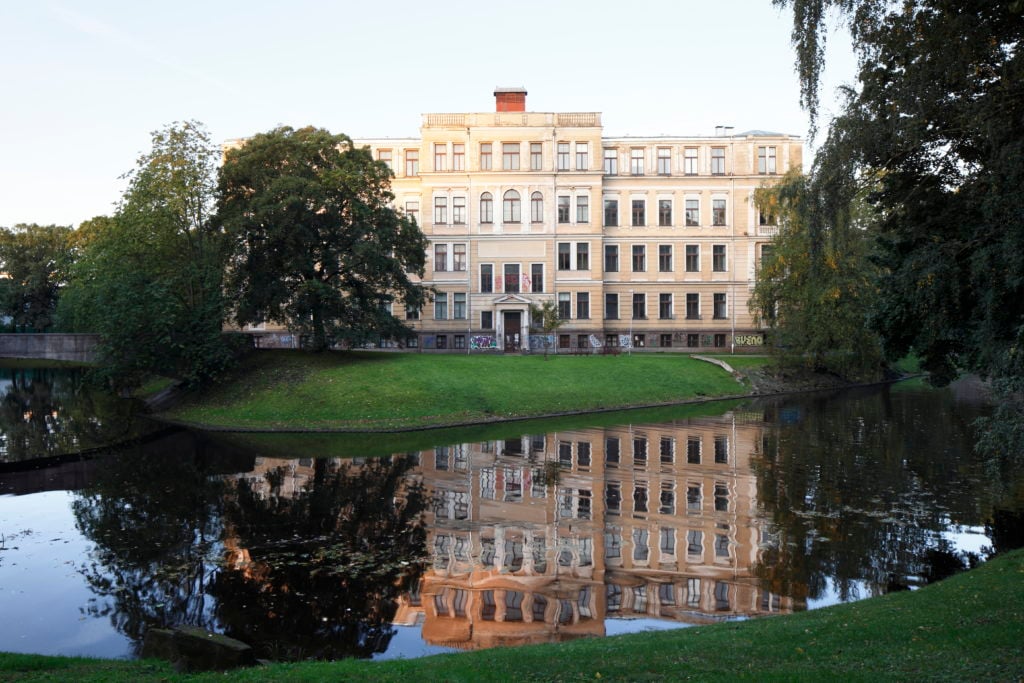
A former biology building at the University of Latvia, one of the venues of RIBOCA1. Courtesy of Ansis Starks and RIBOCA.
It’s a politically challenging time for many European citizens, as well as a particularly precarious time for curators. We have seen the uprising against figures like Chris Dercon at Volksbühne in Berlin, while the #MeToo movement continues to dethrone powerful figures in the art world internationally. I wonder what you think about all of this and whether it affects your curatorial process?
My work has always been socially and politically minded so I have always been aware of the sensitivities regarding representation and identity and how one speaks on behalf of the “other.” We have to be mindful and respectful of minority rights and speak out against abuse of power, and racial, sexual, and gender discrimination. However, I am against the current prevalent kind of toxic political correctness, which is very often finger-pointing, hypocritical and biased, and stifles any dialogue, not to mention freedom of artistic expression. It’s a kind of political correctness that refuses to acknowledge any other point of view or engender intelligent debate of complex issues.
When political correctness goes to the extremes—such as the idea that being old makes you suspect of having a wrong idea of society, or being a man makes you, by definition, hostile towards women, or being white makes you a racist, and having an opinion makes you a reactionary—this is not a healthy state of affairs, as things are much, much more complex than this divisive world view. Politics starts with practicing what you preach and this is what I try to do as a curator.
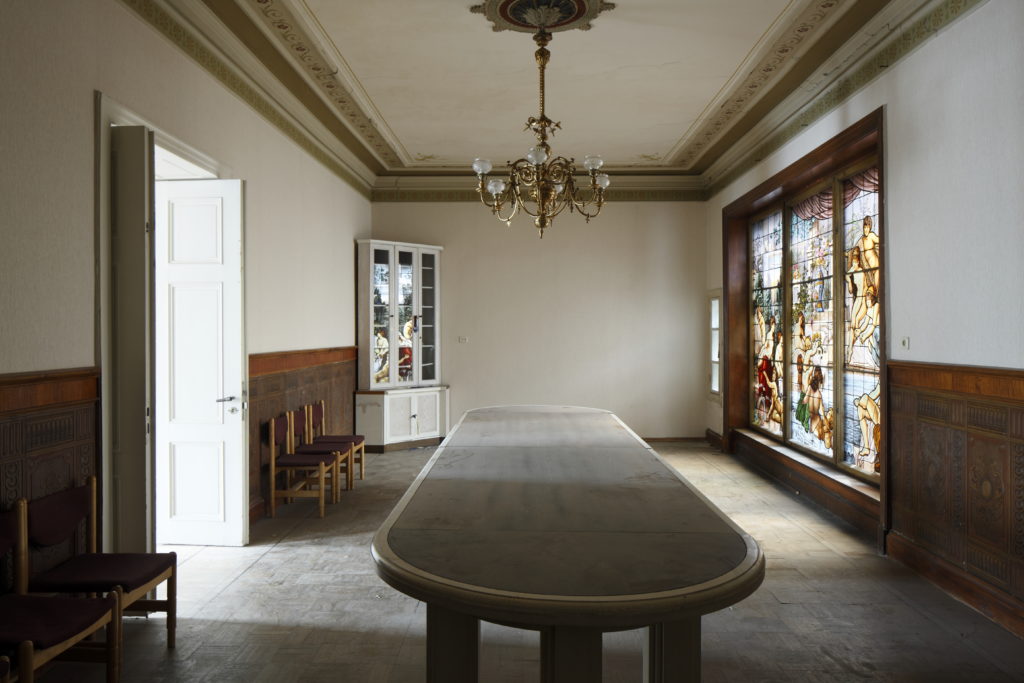
Apartment of Kristaps Morbergs, Riga, one of RIBOCA1’s locations. Photo by Ansis Starks. Courtesy of RIBOCA.
You are an internationally acclaimed curator with many biennials under your belt. Yet you were most recently at Art Brussels, until 2016. How does it feel to be away from art fairs and back into the world of exhibitions?
Actually, I never stopped curating exhibitions when I was at Art Brussels. Among other things, I curated both the Belgian Pavilion at the 56th Venice Biennial as well as the fifth Thessaloniki Biennial (in 2015). My four-year stint at Art Brussels was my one-and-only venture into the commercial art world. I’m glad I did it—because I learned a lot—but the commercial art world is not my natural biotope. I would not have considered working for a fair save for the fact that it was in the city I live—Brussels—where I feel the need to be able to contribute.
However, I am more than happy to be back into the world of curating and doing what I love most, which is making exhibitions and working with artists. Sometimes I find it very disconcerting that the press still labels me as the “former artistic director of Art Brussels” when I have more than 15 years experience in making exhibitions. I have nine biennials under my belt and I have directed two institutions, private as well as public (the Deste Foundation in Athens and the Argos-Centre for Art & Media in Brussels).
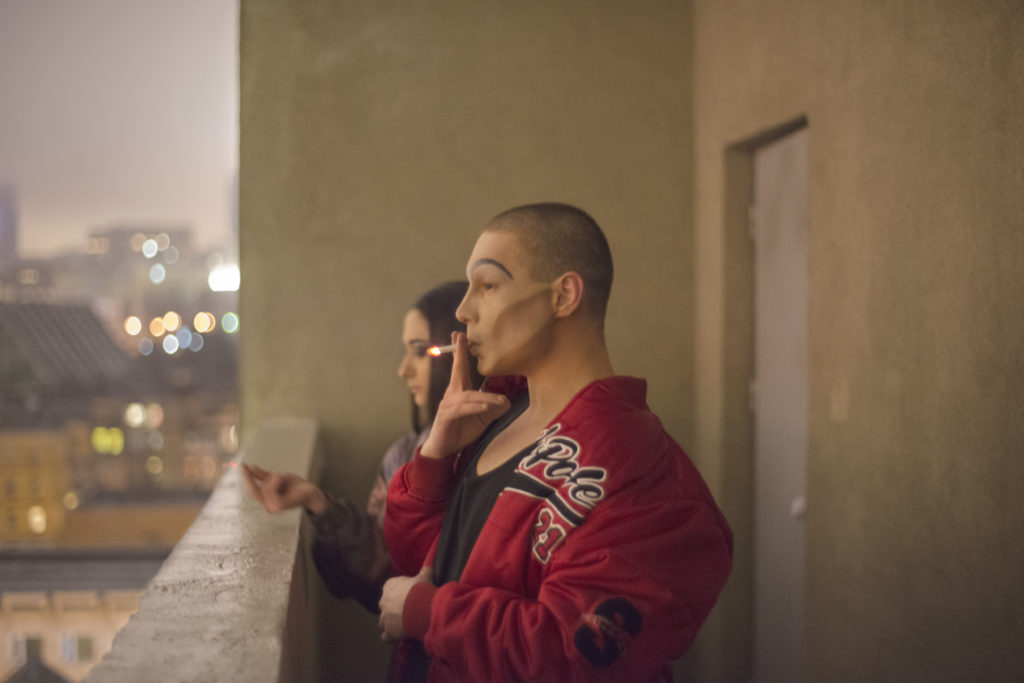
Tobias Zielony, Maskirovka, 2017 (detail). Courtesy of the artist and KOW, Berlin.
As the curator of a debut biennial you are wading into uncharted territory. How are you navigating that and seeking to define the biennial for its inaugural edition?
I have been fortunate enough to be involved in this biennial from the very beginning, and in addition to assuming responsibility for the curatorial part, I have also helped to set it up together with the founder/commissioner Agniya Mirgorodskaya and the executive director, Anastasia Blokhina. Having already curated several (very different) biennials myself, I was well aware of the criticisms around biennial culture, or “biennialization” as it has been called.
One of the privileges I had was to help conceive of the long-term vision of RIBOCA, and to help make sure that the biennial is set on what we believe are correct, solid, and ethical foundations. I also had the chance to make sure that some major problems such as the economic exploitation of artists or cultural workers—which are so frequent in the art world—were addressed. All artists in RIBOCA, for example, are paid, whether they are showing existing work or a new commission. They receive per diems on top of that—something which should be the norm but isn’t. One of our main concerns was to create a sustainable model based on best practices that prioritize artists, artistic production, and the meticulous presentation and mediation of art.
It was also very important that the biennial is not perceived as a foreign parachute into Riga. So from the beginning I started my artistic research in Riga and the Baltic countries and from the beginning we started conversations with local partners and also ensured that a large percentage of our team would be made up of Latvians and people from the Baltic countries. This was important in avoiding the drawbacks of a new institution arriving in a place for the first time. As this is the first edition, it was important to get everything right from the beginning.
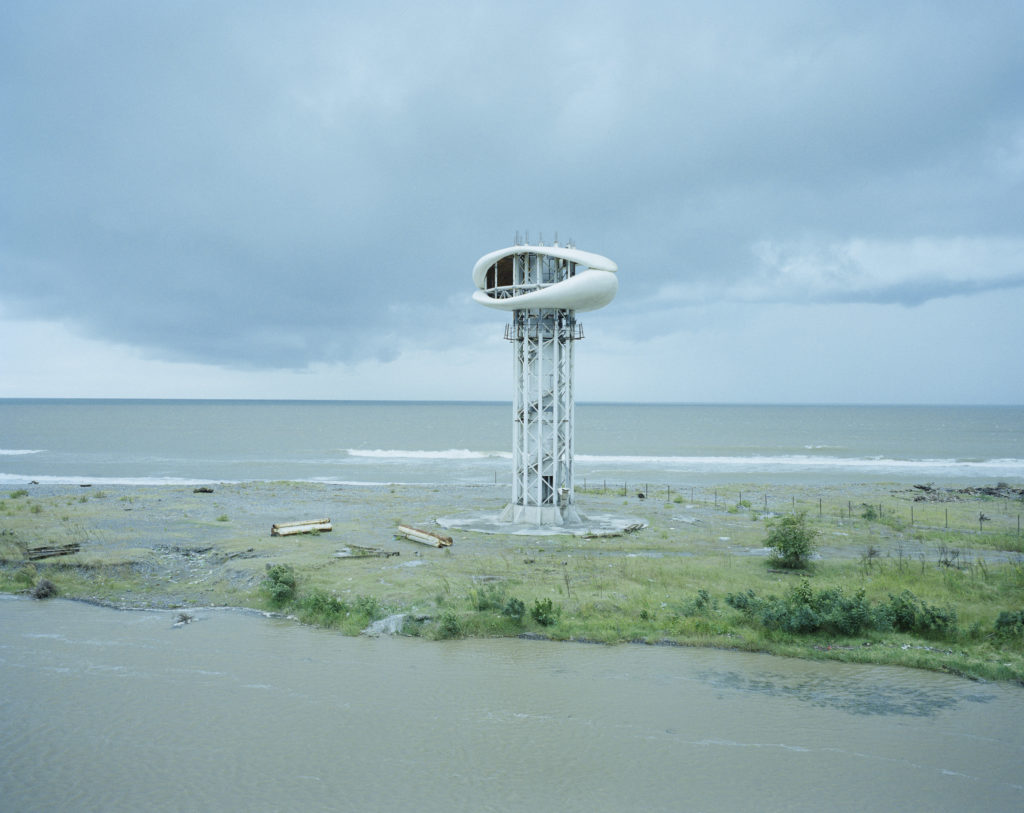
A new commission for RIBOCA1 by Sputnik Photos, Lost Territories Archive, 2008-16 2018 (detail). Courtesy of Sputnik Photos.
Do you think there are too many biennials today? How did RIBOCA work to combat the pitfalls of “biennialization”?
One cannot say “there are too many biennials.” That’s like saying there are too many concerts, too much football, too much anything. We live in an age of the plenty of everything. But biennials only make sense if they are rooted in the place where they occur and if there is a need for them. It wouldn’t make sense to have a biennial in London, let’s say, or any other city with a solid infrastructure in contemporary art in terms of galleries, funding, and institutions.
I also don’t believe in the generic internationalist model, which checks all the geographical boxes and currently fashionable issues in the art world. The Riga Biennial is a European biennial with a regional focus—in other words a biennial in dialogue with the cultural, historical, and sociopolitical context of the city and its geographic surrounds—but also with an international outlook as everything today is more and more connected.
The Riga Biennial is based on a working process that starts from the local, expanding to the national and the regional, and finally to the transnational. It aims to take root and make roots in the place where it is situated. Hence a significant proportion of the commissioned and selected artists either live, work, or were born in the Baltic region, a territory that still remains relatively unexplored, despite its prolific artistic production.
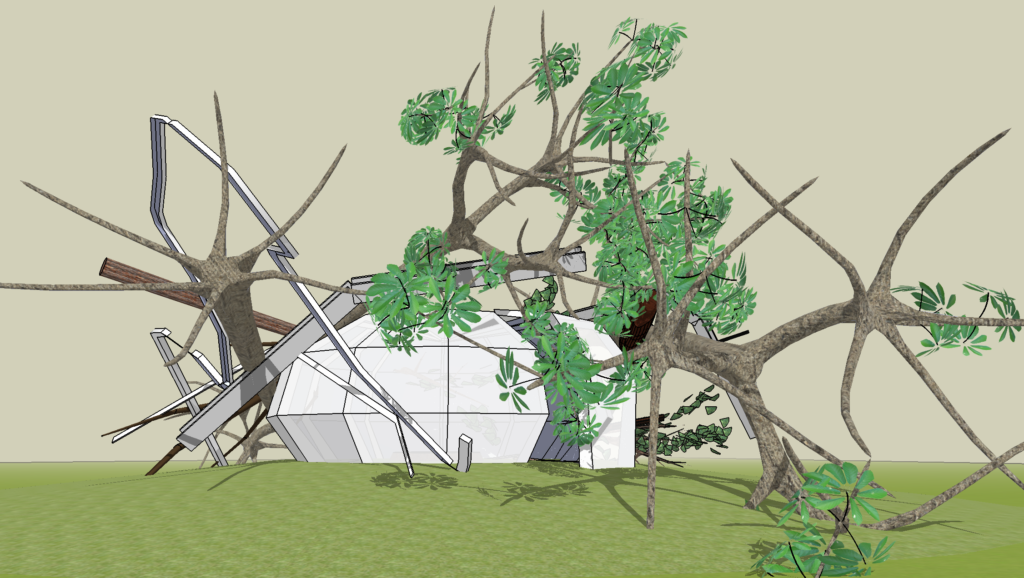
Working sketch of Andris Eglītis and Katrīna Neiburga’s new commission for RIBOCA1 The Nest (2018). Courtesy of the artists.
It’s the centennial of Latvia this year, as well as other Baltic countries like Lithuania and Estonia. The region is at an interesting crossroads both in terms of its geography (somewhere between East and West) and its post-Soviet identity and Latvian identities. How does RIBOCA1 unpack these issues?
The Baltic countries, and Riga in particular, provide an ideal locus to explore the nature of change—the main focal point of the biennial—as they have often experienced violent and systemic change and have had to deal with the resulting political and economic restructuring, identity renegotiation, and global reintegration.
With Putin’s assertive presence in the region, his nationalist and expansionist tendencies and, on the other hand, the presence of NATO bases in the Baltic region, this part of the world is now in the spotlight.
The collapse of the Soviet Union resulted in what has been called a “new regional geography,” especially in the Baltics. On the one hand, the Baltic states are now part of Europe: fully-fledged EU members and host to NATO bases. But on the other hand, the threat from Russia still feels very present in the region, especially at a time when Putin’s aggressive, expansionist, and authoritarian tendencies have created, an ill-at-ease feeling.
Let’s not forget, also, that armed conflicts continue to take place in many republics of the former USSR that became independent states after 1991. Russia continues to provoke and perpetuate these conflicts by exercising political influence (through pro-Russian local political parties) using propagandistic, financial, military, and other surreptitious means, thus trying to re-claim its historic sphere of influence. These competing political interests are complicated by the fact that such territories often have large minority populations who identify themselves as Russian and welcome Russia’s intervention. Such conflicts are often further complicated by overlapping ethnic, linguistic, and religious divisions. Let’s also not forget that Latvia, Lithuania, and Estonia have only been independent for a few decades since the beginning of the last century so they are fragile democracies and geographies.
On the other hand, the entire region has become the locus of political and economic restructuring, identity renegotiation, and global reintegration, and as such the region is a very good example of the forces of change at work—which is also the main axes of investigation of the biennial.
Can you tell me about where the title came from, “Everything Was Forever, Until It Was No More”?
The title is borrowed from anthropologist Alexei Yurchak’s book of the same name. Yurchak discusses the collapse of the Soviet Union and one particular characteristic that defined it: the sense that, although the Soviet system was felt to be permanent and immutable, its demise was at the same time perceived as completely natural. The shock of being thrust into a new order came only later. The title of his book suggests the slippery nature of change, that what may seem eternal can suddenly come to an end. The title of Yurchak’s book resonates across the entire post-Soviet sphere, the Baltic states included, but it can also be seen as a potent metaphor for our own era.
Unlike the book, however, the biennial does not focus on post-Soviet change (which has been the subject of many exhibitions post-1989), but will instead explore the multiple dimensions of change that we experience in the present day. Although the post-Soviet history of the Baltic states will not be ignored, it forms only a part of this broader narrative whole.
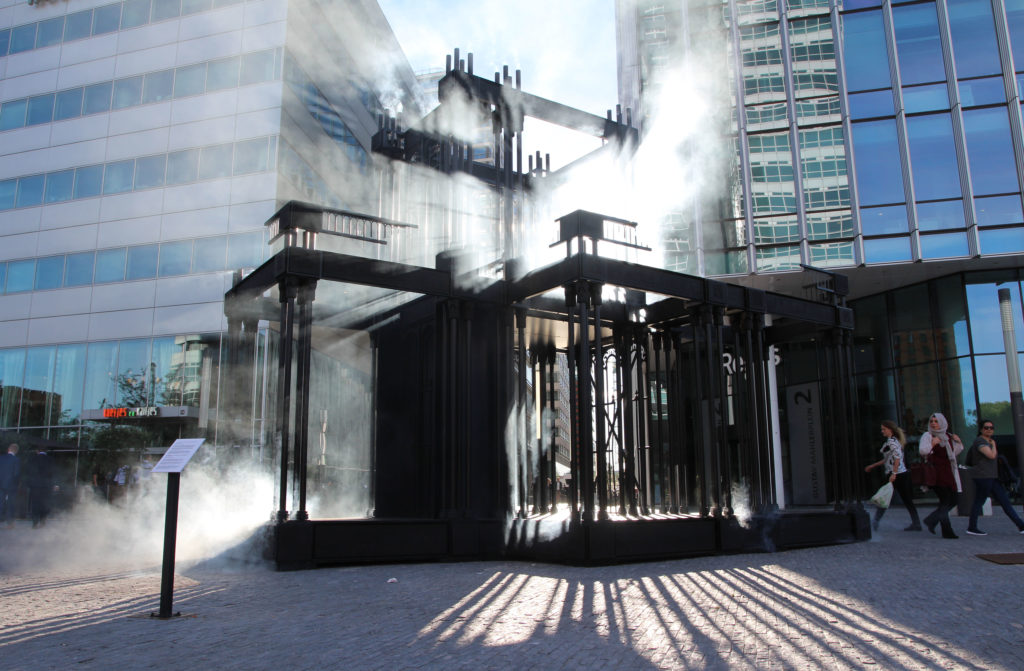
James Beckett, Palace Ruin (2016). Courtesy of the artist and Wilfried Lentz, Rotterdam.
There is a scheduling overlap between the Baltic Triennial and RIBOCA1. The two are quite different in their approach and concepts, but both do occur in Latvia this year. How have you navigated this as a curator? Did you attend the Triennial opening in Lithuania?
I have not yet had the time to visit the Baltic Triennial, which opened recently in Vilnius, as we have been in the final stages of preparation for the Riga Biennial, though I of course plan to visit later. The two biennials are completely independent of each other and there was no contact between the teams. It’s interesting to note that we only share one artist (the Lithuanian artist Augustas Serapinas), so both projects will be very different—all the more reason to visit them both. I see the triennial and the biennial as different but very complementary beasts, and this can only be a good thing.
The Baltic Triennial started when the Baltic art scene was practically unknown to the Western art world and “art from the West” was quite a strange, radical mystery for the local audience. As some of my colleagues in Vilnius have told me, since the beginning, the triennial has shown a strong desire to keep this mystery as one of the most prominent traits, together with a preference for more ephemeral themes and intangible artworks.
RIBOCA, on the other hand, includes more tangible and physical kinds of art and is less interested in the mystification of art, but, on the contrary, how art can contribute to knowledge production and awareness of the issues that matter locally, regionally and internationally. So, the first edition of the Riga Biennial seeks more clear, facilitative communication with a general viewer and a more open and reciprocal relationship with local art scene in addition to its focus on sustainability, rather than change and shock.

Marco Montiel-Soto, Permanent storm for a tropical constellation (2017). Courtesy of the artist, Carmen Araujo Arte, Caracas and Galería José de la Fuente.
What did you look for when seeking the artists and works to feature in RIBOCA1?
I look for works that are content-rich, conceptually intelligent, complex, layered, socially and politically minded—very often historically grounded—which are at the same time visually engaging and sometimes even poetic or humorous.
RIBOCA1 has some fantastic venues, a mix of modern and historic, public and private. What kinds of criteria did you have when researching spaces?
As a once multi-ethnic, historically layered city, which was part of the Russian Empire, had a strong presence of Baltic Germans, and was occupied by various powers, Riga is a very rich city architecturally. As the biennial theme is focused on the notion of change and looks into historical, political, and social transitions we decided to work with some buildings and spaces that reflect this.
For example, the Former Faculty of Biology, built at the turn of the last century, reflects a moment when the city was economically prosperous and progressive. This building, which started as the Museum of Chemistry, was one of the most advanced centers of scientific study at the time. Scientists came from Moscow to study here. Morbergs Apartment, a beautiful turn-of-the-20th-century apartment reflects an economically prosperous moment of the city at the turn of the last century.
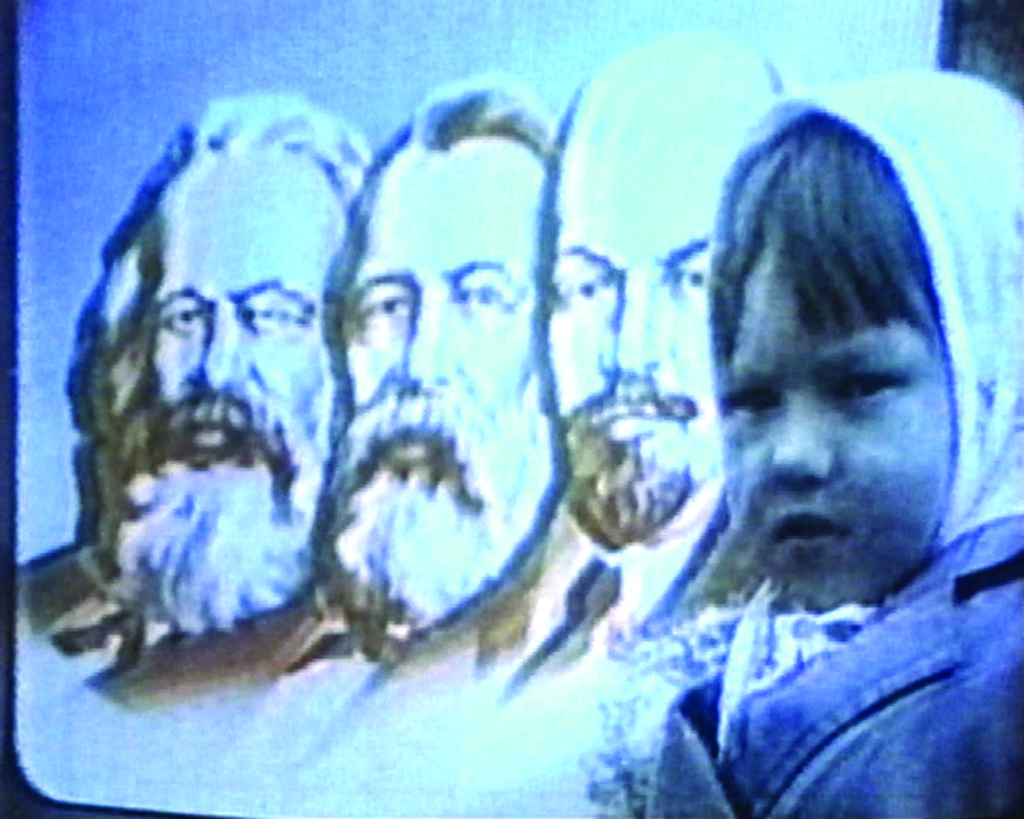
Jonas Mekas, Lithuania and the Collapse of the USSR (2008) (video still). Courtesy of the artist and RE VOIR, Paris.
More significantly, however, it has a direct view of Freedom Square, one of Riga’s most iconic and historically significant locations, and a symbol for freedom, independence, and sovereignty, whose symbolism was twisted during Soviet occupation. Andrejsala, another location, is the former industrial port area, at the banks of the Daugava River, and Zuzeum, a former cork factory from the early 20th century, reflect the city’s strong industrial past when Riga was an important trading post, and significant industrial base of the Russian Empire in the 19th century, as well as of the Soviet Union.
Sporta2 Square, on the other hand, a former factory and warehouse district which is turning into an emerging art, technology and business quarter and a new district of Contemporary Riga reflects the city’s most recent economic history and the transition from an industrial, material-based economy to one based on services. Each venue hosts a different chapter of the biennial.
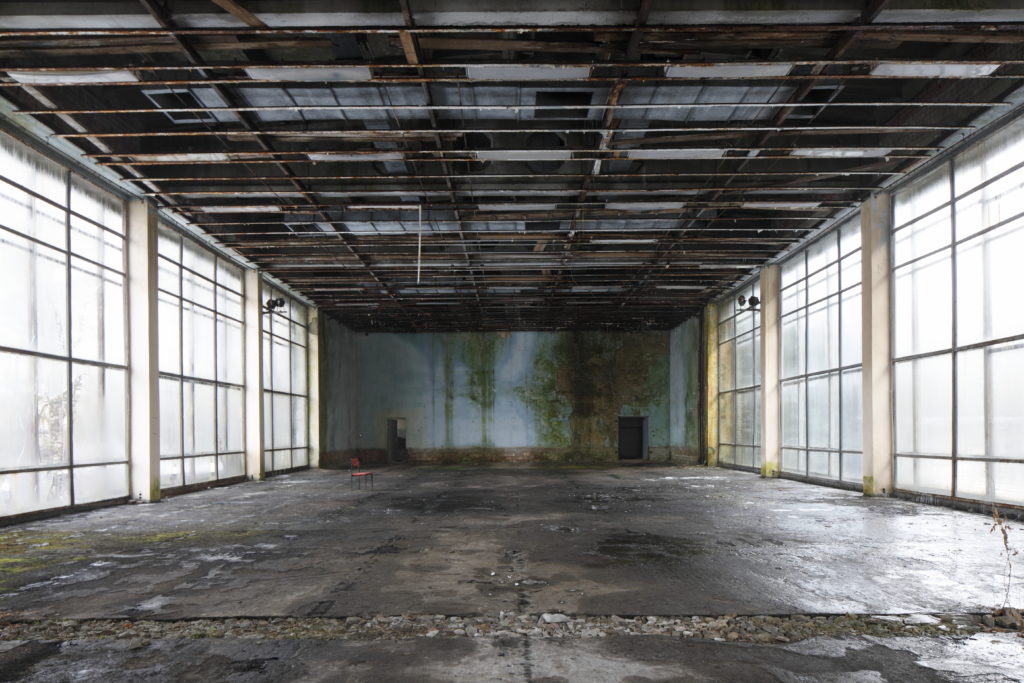
Bolshevichka textile factory, one of the locations of RIBOCA1. Photo by Ansis Stark. Courtesy of RIBOCA.
What questions is RIBOCA1 asking itself or the viewer at this particular political moment in Europe? You recently closed an exhibition in the Baltic at the Tallinn Art Hall that was focused on nationalism. Has that show in any way informed RIBOCA1?
My curatorial practice to date has always looked into how artists respond to major social, political, and economic questions of our time. This is always one of my main objectives: to highlight practices that speak about the state of our world today—as artists are able to offer valuable insights that we don’t always get from mainstream and social media, as well as hegemonic political narratives. As such, my exhibitions explore the relationship between art, society and politics with a particular view on questions of democracy, human rights, capitalism, crisis and changing global production circuits.
The exhibition focuses on and interrogates several pressing issues: from the “great acceleration” most of us experience today in urban centers and mega-cities, the transformation of social life and work, the end of privacy and “post-truth,” to the impact of rapid advancements in science and technology and the negotiation of constant crises—of ecology, capitalism, democracy. And of course it considers the shifts and changes taking place in Europe right now, from socioeconomic ones current state of Europe and the recent rise in populist, reactionary, and authoritarian politics.
The Riga International Biennial of Contemporary Art (RIBOCA) is taking place at various locations in Riga, Latvia from June 2 through October 28, 2018.